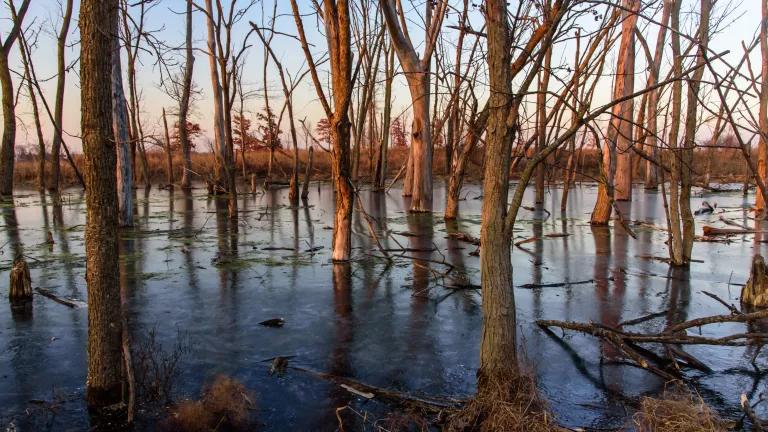The US Court of Appeals for the Fifth Circuit yesterday delivered a ruling in our lawsuit against EPA challenging its refusal to make a decision about how to address the algae pollution plaguing our nation's waterways. The court rejected EPA's argument that its decision avoidance was unchallengeable in court, but sent back the district court's order with instructions that the judge re-evaluate it based on a clarified standard.
Our case concerns EPA's 2011 response to the plaintiff organizations' 2008 petition asking EPA to use its authority under the Clean Water Act to set water quality standards for nitrogen and phosphorus (or "nutrient") pollution. Nutrient pollution is what's fueling the growth of massive, sometimes toxic mats of algae all around the country, and creating the Gulf of Mexico dead zone, an area the size of the state of Connecticut rendered uninhabitable to marine life as a result of decomposing algae. Instead of making a determination whether federal action on the problem is necessary, EPA ducked that question entirely, responding that it preferred not to make a decision one way or the other because it would rather pursue the same voluntary, cooperative strategies it has been clinging to for two decades - and which have been failing miserably that entire time. The district court held in 2013 that this response to our petition was insufficient under the Clean Water Act, which requires that a decision not to engage in rulemaking be based on reasons allowable under the Act. The district court had also rejected EPA's argument that its non-answer should be immune from judicial scrutiny altogether.
On appeal, the Fifth Circuit upheld the district court's decision that EPA can't duck court scrutiny, and that its non-answer to our petition is, indeed, reviewable in response to a lawsuit. It's an important conclusion for us: if EPA is going to try to hide from the nutrient pollution crisis, it had better not expect to be able to hide from the courts as well.
The Court of Appeals additionally held that in its 2013 decision, the district court had not made sufficiently clear that EPA did have the option of declining to decide one way or the other on the question of rulemaking necessity. However, the appeals court made clear that this was not a blank check to the agency - EPA could decide not to decide, provided that its response was based on the criteria for decision outlined in the Clean Water Act for such decisions. That is an extremely important caveat. EPA's 2011 letter in response to our petition never gave us a single reason based on the Clean Water Act for not making a decision whether federal regulation of nutrient pollution is necessary. It provided only a mishmash of excuses why it preferred not to adhere to the Act's rulemaking structure at all. That is exactly what EPA had done years ago when first asked to promulgate regulations limiting greenhouse gas emissions - leading to a smackdown of this approach by the US Supreme Court, which chastised the Agency for providing only a "laundry list of reasons" why it didn't want to take any action.
In our case, the Court of Appeals sent the decision back to the district court with instructions, effectively, that it reconsider its earlier decision based on a clarified articulation of the standard. It made note of the generally very deferential standard that courts apply when reviewing agency decisions not to regulate, but cut EPA no slack on the requirement that this third option of non-decision be grounded in the Clean Water Act.
So the ball will soon bounce back to the district court (in May, when appeal periods have run) for a new decision. We are optimistic that the court will reaffirm its previous sound ruling.




